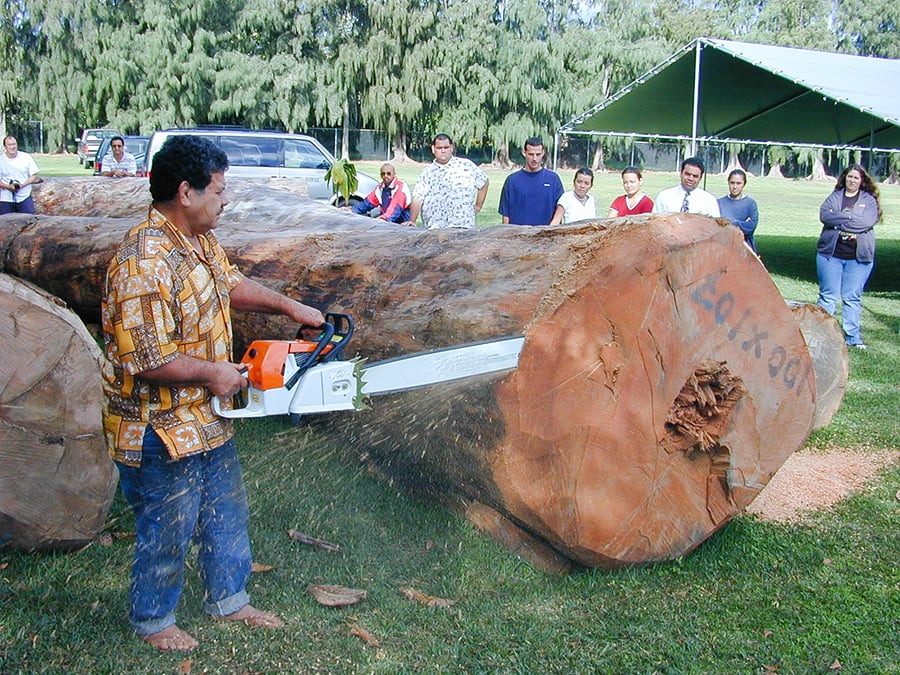
Fifty years ago, an ember that had long smoldered among the Polynesian people began to grow. People hungered to understand how their ancestors had navigated the great waters and settled the island nations. There were those who knew the old ways of building seafaring canoes, and those who wanted to learn. They came together, forging an alliance, determined to keep this part of their culture alive.
In Lāʻie on ʻOahu, that drive led to the construction of Iosepa, a traditional double-hulled voyaging canoe. Master Carvers Sione Tuione Pulotu and Kawika Eskaran designed and constructed the vessel from seven huge dakua logs imported from Fiji. The build took nine months and the help of many community members. In November 2001, Iosepa was launched for the first time.
Since then, Iosepa has been on 8 major voyages, including participation with other voyaging canoes in the 2024 FestPAC celebration. Between those trips, it serves as a teaching vessel. Students explore construction and maintenance, rigging, and wayfinding (traditional Polynesian navigation) as they develop a greater appreciation for their heritage. About every two years, some are privileged to employ what they have learned as they venture out from shore on short excursions.
Iosepa’s housing and maintenance is jointly overseen by BYU-Hawaiʻi and the Polynesian Cultural Center. While students benefit, so do community members and hundreds of thousands of visitors who witness the majesty of this vessel every year. Iosepa’s voyaging is a symbol of unity among the Pacific island nations. P. Alfred Grace, President of the Polynesian Cultural Center and New Zealand native, remarked, “It is a tremendous thing to lose sight of the land and continue on. And because our ancestors were willing to do that, we have the opportunities and the blessings that we have in our lives today.






